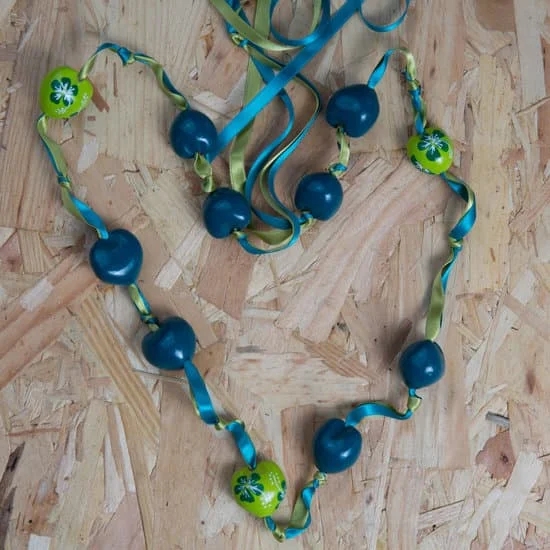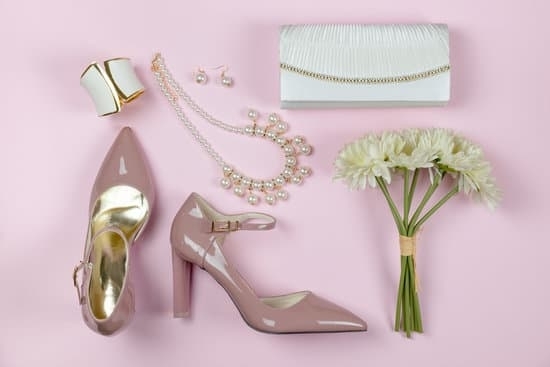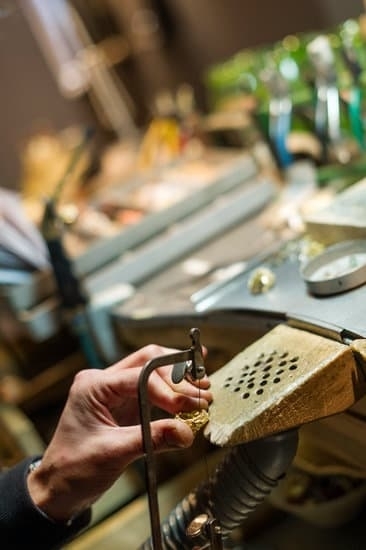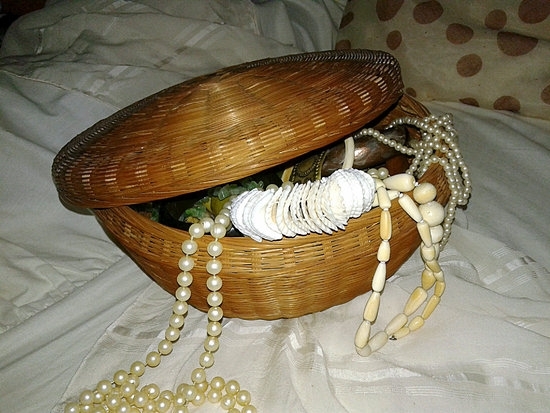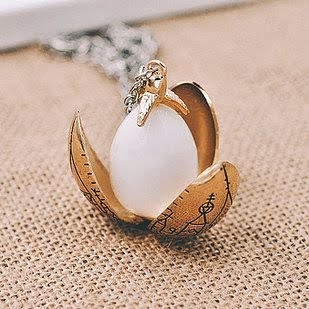Diamonds have long captivated women around the world, sparking a desire that transcends time and culture. But what is it about these precious stones that ignites such fervent admiration in women?
Furthermore, why do humans in general possess an innate affinity for jewelry, regardless of gender or background? In this article, we delve into the fascinating world of diamonds and jewelry, unraveling the reasons behind women’s adoration for these sparkling gems and exploring the deeper psychological and cultural factors that contribute to humans’ universal attraction to jewelry.
Throughout history, diamonds have been treasured for their rare beauty. From ancient civilizations to modern societies, diamonds have held a special place in human history. In this article, we unveil the origins of diamonds and jewelry, tracing their journey from rough minerals to exquisite adornments. By understanding their historical significance, we can begin to comprehend why they continue to hold such allure today.
Beyond their outward magnificence, diamonds carry profound symbolism and emotional weight for many women. We explore the deep attachments formed between women and diamonds, peering into the psychological aspects that drive these strong emotional connections. Wearing diamond jewelry often represents love, commitment, or status – all deeply ingrained elements in human nature. By uncovering these significances and symbols surrounding diamonds, we gain insight into the mystery behind women’s fascination with them.
Join us as we embark on a journey delving into various aspects of women’s love for diamonds and humanity’s enduring infatuation with jewelry. From its role as a status symbol to the power of marketing tactics employed by advertisers, from its financial appeal as an investment option to its significance as a mode of self-expression – this article examines it all.
By exploring these facets of diamonds and jewelry appreciation through different angles – historical, societal, psychological, and cultural – we hope to shed light on this age-old fascination shared by women and humans alike.
A Sparkling History
Jewelry has a long and fascinating history, with diamonds standing out as one of the most beloved gemstones throughout time. The allure of diamonds can be traced back centuries, when they were first discovered and valued for their rarity and beauty. Understanding the origins of diamonds and jewelry helps us appreciate why women love these precious stones so much.
The use of jewelry can be traced back to ancient civilizations, where it held deep cultural and religious significance. In fact, archeological digs have uncovered intricate pieces of jewelry dating back thousands of years. In ancient Egypt, for example, jewelry was not only worn as adornment but also had symbolic meanings attached to it. The Ancient Egyptians believed that certain jewelry items could provide protection or bring good luck.
Throughout history, diamonds have been associated with power, wealth, and luxury. The earliest record of diamonds dates back to India in the 4th century BC, where they were highly valued for their durability and sparkle. Diamonds were not just used for adornment by royals and aristocrats; they were also believed to possess mystical powers. It wasn’t until later that diamond engagement rings became popularized by European nobility in the 15th century.
Jewelry has always held a special place in society due to its ability to convey beauty, status, and personal meaning. Whether worn as a form of self-expression or passed down through generations as heirlooms, jewelry holds sentimental value that transcends time. Given this rich history and cultural significance surrounding both diamonds and jewelry in general, it is no wonder that women continue to be captivated by these sparkling gems today.
Significance and Symbolism
When it comes to diamonds, their significance and symbolism go far beyond their physical beauty. Diamonds have long been associated with emotions such as love, commitment, and strength. This deep emotional attachment that women create with diamonds can be attributed to various factors, including historical symbolism, cultural traditions, and personal meaning.
One of the reasons women are drawn to diamonds is because they symbolize everlasting love and commitment. Diamonds are often chosen as the centerpiece for engagement rings and wedding bands because they are believed to represent a bond that is meant to last a lifetime. The durability and timeless nature of diamonds reinforce the idea of enduring love and fidelity.
Furthermore, diamonds also hold symbolic meaning in terms of personal milestones and achievements. For many women, receiving a diamond piece of jewelry represents a significant event or accomplishment in their lives. Whether it’s a graduation gift, an anniversary present, or a reward for professional success, diamonds become tangible symbols that commemorate these important moments.
Another reason behind women’s emotional attachment to diamonds lies in their cultural significance. Throughout history, different cultures have assigned unique meanings to diamonds. In ancient times, for example, diamonds were thought to possess magical powers that could protect the wearer from harm. In modern society, diamonds have come to represent not only wealth but also social status and success. Therefore, owning diamond jewelry can serve as a form of self-expression and elevate one’s social standing.
Diamonds as a Status Symbol
Diamonds have long been associated with wealth, luxury, and status. Throughout history, diamond jewelry has served as a visible symbol of power and social standing. This section will delve into the societal influences and perceptions surrounding diamond jewelry, exploring why it is often seen as a status symbol.
One reason that diamonds are regarded as a status symbol is their rarity. Diamonds are found in only a few places around the world, making them inherently scarce. This scarcity contributes to their high value and exclusivity, making them desirable for those seeking to display their wealth.
In addition to their rarity, diamonds are also prized for their durability. Unlike other gemstones that can be easily damaged or deteriorate over time, diamonds are known for their hardness and resilience. This quality reinforces the perception of diamond jewelry as something valuable and precious – an enduring symbol of success.
Furthermore, the tradition of giving diamond engagement rings has played a significant role in associating diamonds with status. The cultural expectation of presenting a diamond ring when proposing marriage has been heavily promoted by diamond companies through marketing campaigns. As a result, society has come to view the presence of a diamond engagement ring as evidence of financial security and commitment.
Societal influences also shape the perceptions surrounding diamond size and quality. Larger diamonds or those with higher clarity or color grades are often associated with greater wealth and prestige. Individuals may feel pressure to acquire larger or more valuable diamonds in order to signal their social standing.
Overall, societal influences greatly contribute to the perception of diamond jewelry as a status symbol. The rarity and durability of diamonds, along with cultural traditions and expectations surrounding engagements, create an environment where owning diamonds is seen as indicative of wealth and social position.
The Power of Advertisements
Advertisements play a crucial role in shaping consumer preferences and desires. The diamond industry has been particularly successful in using marketing tactics to engage women’s desire for diamonds. By creating a narrative around love, commitment, and prestige, diamond advertisements tap into women’s emotional connections, reinforcing the idea that diamonds are not just beautiful but also symbolic of deep emotions and personal milestones.
Creating Emotional Attachments
Diamond advertisements often focus on the emotional significance of diamonds, emphasizing their connection to love, relationships, and special moments. By portraying diamonds as a symbol of eternal love and commitment, these ads target women who value sentimentality and romantic ideals. The inclusion of narratives featuring couples or families celebrating significant occasions helps to create an emotional connection with the audience and reinforce the idea that diamonds are essential markers of life’s most precious moments.
Additionally, many diamond ads highlight the concept of self-worth and empowerment by promoting the idea that owning a diamond signifies success, beauty, and femininity. These marketing strategies appeal to women’s desires for validation and recognition in society by positioning diamond jewelry as a symbol of achievement.
Association with Status
Diamonds have long been associated with luxury and wealth, making them desirable symbols of status. Advertisements often feature glamorous lifestyles, high-profile celebrities or socialites wearing exquisite diamond jewelry to create an aspirational association for consumers. By highlighting this link between diamonds and status, advertising campaigns reinforce the notion that owning diamonds elevates one’s social standing or validates one’s accomplishments.
Furthermore, companies employ techniques such as limited editions or exclusive collections to create a sense of exclusivity and rarity surrounding certain diamond pieces or designs. This drives demand among consumers who seek unique items that can set them apart from others in terms of style or status.
The Role of Influencers
Another effective marketing strategy employed by the diamond industry is influencer marketing. Collaborating with influential individuals, such as celebrities or social media influencers, allows diamond brands to leverage their credibility and reach a wider audience.
These partnerships often include sponsored content on social media platforms, where influencers showcase diamond jewelry in an aspirational or lifestyle context. By associating diamonds with popular personalities and their desirable lifestyles, these campaigns aim to make the desire for diamonds more accessible and relatable to women of various backgrounds.
Diamonds as Investments
Diamonds have long been considered a sought-after investment option due to their durability, rarity, and potential for appreciation. While many people primarily view diamonds as exquisite pieces of jewelry, they also hold intrinsic value that can make them a valuable asset. This section will explore the financial appeal of diamonds and jewelry as investments.
One reason why diamonds are attractive as investments is their inherent scarcity. The global diamond supply is limited, leading to an increase in demand over time. Unlike other commodities that can be easily produced or replicated, diamonds require significant resources and expertise to mine and cut. This rarity adds to their desirability and potential for long-term value growth.
An important factor contributing to the financial appeal of diamonds is their ability to retain value even during economic downturns. Diamonds have historically shown resilience in times of market instability when other assets may experience devaluation. Additionally, unlike paper currencies or stocks, diamonds are tangible assets that can be held physically. This quality offers investors a sense of security knowing they possess a valuable commodity that cannot simply disappear overnight.
| Year | Average Annual Return on Investment (ROI) for Diamonds* |
|---|---|
| 2000 | 6.4% |
| 2010 | 8.1% |
| 2020 | 10.2% |
As seen in the table above, historical data indicates that diamond investments have shown consistent growth over the years. However, it is important to note that the value of individual diamonds can vary based on various factors such as the diamond’s cut, color, clarity, and carat weight.
Psychological Factors
Jewelry has been a part of human culture for thousands of years, and its universal appeal can be attributed to various psychological and evolutionary factors. At a psychological level, humans are naturally attracted to shiny objects, which dates back to our ancestors who were drawn to bright colors and reflective surfaces as a means of survival. This instinctual attraction to jewelry can be associated with our deep-seated need for novelty and fascination with beautiful things.
Furthermore, the allure of jewelry goes beyond its visual appeal. Research suggests that wearing jewelry can have a profound impact on an individual’s self-esteem and confidence. Adorning oneself with beautiful accessories can enhance one’s perceived attractiveness and serve as a form of self-expression. The ability to wear unique pieces allows individuals to convey their personal style and individuality, which contributes to a sense of identity and belonging.
From an evolutionary standpoint, jewelry has played a significant role in mate selection. Historically, jewelry symbolized wealth or status, making it an attractive trait in potential partners. People were drawn to those adorned in extravagant jewelry because it signaled access to resources or power. This preference for individuals wearing jewelry perpetuated its desirability over time, reaffirming its association with social status.
Self-Expression and Personal Style
Jewelry has long been admired for its ability to act as an extension of a person’s identity and fashion choices, particularly for women. With its wide variety of styles, materials, and designs, jewelry offers individuals a unique opportunity to express themselves and showcase their personal style. This section will explore how jewelry plays a significant role in self-expression and fashion, allowing women to tell their own stories through the pieces they wear.
The Role of Jewelry in Self-Expression
Jewelry holds immense power in allowing individuals to convey their personality and express their inner selves. Each piece of jewelry chosen by a woman is carefully selected to reflect her unique individuality, taste, and preferences. Whether she chooses delicate and minimalist jewelry or bold and statement-making pieces, her selection is driven by an innate desire to communicate something about herself to the world.
Through the choice of metals, gemstones, and design elements, women are able to create a personal story with every piece they wear. For example, a woman who prefers vintage-inspired jewelry may have a fondness for nostalgia or appreciate the elegance and charm of bygone eras. On the other hand, someone who opts for contemporary and sleek designs might be more drawn to modern aesthetics, appreciating clean lines and simplicity.
Jewelry as a Reflection of Fashion Choices
Fashion is constantly evolving, with trends that come and go. However, one thing remains consistent – the ability of jewelry to enhance any outfit or style choice. Women rely on jewelry as an essential component of their everyday wardrobe because it has the power to elevate even the simplest of ensembles.
Whether it’s adding a pair of earrings to complement an elegant dress or layering necklaces to accessorize a casual outfit, jewelry allows women to experiment with different looks while adapting them according to their own tastes. It serves as an expressive tool that can transform an entire outfit into something unique and special.
Moreover, jewelry becomes an extension of a woman’s personal style, creating a signature look that sets her apart. Some women may prefer dainty and delicate pieces that exude elegance and femininity, while others might gravitate towards bold statement jewelry that demands attention. By selecting jewelry that aligns with their fashion choices, women have the ability to curate a distinct personal style that communicates their preferences and represents who they are.
Global Cultural Perspectives
Jewelry has played a significant role in cultures around the world for centuries. Each culture has its own unique traditions and customs when it comes to wearing jewelry, making it an important aspect of self-expression, cultural identity, and social status. By exploring these global cultural perspectives, we can gain a deeper understanding of the diversity and significance of jewelry in different societies.
In many African cultures, jewelry holds great cultural significance. For example, in the Maasai community of East Africa, both men and women wear intricate beadwork as a symbol of their identity and social standing. The colors and patterns used in their jewelry often reflect specific meanings related to tribal affiliations or stages of life. Similarly, in West Africa, gold is highly valued and is frequently used to create elaborate pieces that showcase wealth and status.
In Indian culture, jewelry holds immense spiritual significance. For generations, jewelry has been seen as both adornment and protection against negative energies. Traditional Indian jewelry designs are often inspired by nature with intricate details such as lotus flowers or peacock motifs. It is customary for Indian brides to wear heavy gold jewelry not only as an expression of beauty but also to bring good luck and prosperity to their married life.
In Japan, traditional Japanese jewelry called “kanzashi” is worn by women during special occasions such as weddings or tea ceremonies. These hair ornaments are made from various materials such as gold, silver, or lacquered wood adorning hairstyles with elegance. Kanzashi designs often reflect the changing seasons or specific celebratory themes.
These are just a few examples of how jewelry plays a significant role in cultural traditions worldwide. As we continue to explore different global perspectives on jewelry wearing customs, we can appreciate the rich history and diverse meanings behind each piece.
| Culture | Tradition or Custom |
|---|---|
| African | Maasai community wearing intricate beadwork as a symbol of identity and social standing |
| Indian | Brides wearing heavy gold jewelry for good luck and prosperity in their married life |
| Japanese | Wearing traditional kanzashi hair ornaments during special occasions to reflect changing seasons or celebratory themes |
Ethical Considerations
The Dark Side of Diamond Mining
One of the major concerns surrounding diamonds is the ethical implication of diamond mining. Historically, diamond mining has been associated with human rights abuses and environmental degradation. In many countries where diamonds are mined, workers face hazardous working conditions, low wages, and exploitation.
Moreover, diamond mining often results in deforestation, land degradation, and water pollution. The prevalence of conflict or “blood” diamonds – those mined in war zones and used to finance armed conflict against governments – has further tarnished the industry’s reputation.
However, as consumer awareness has grown, there has been a rise in demand for ethically-sourced diamonds and jewelry options. Ethical practices in diamond mining now include fair labor practices, responsible environmental management, and ensuring that proceeds from sales benefit local communities. Certified organizations like the Kimberley Process Certification Scheme have been established to track diamonds from their point of origin to ensure they are not conflict diamonds.
The Rise of Ethical Jewelry Options
In response to consumer demand for ethically-sourced jewelry, there has been an increase in the availability of ethical jewelry options. These options encompass both lab-grown diamonds and alternative gemstones like moissanite or colored gemstones sourced from sustainable mines. Lab-grown diamonds offer a more sustainable alternative as they do not require mining and have a lower carbon footprint compared to natural diamonds.
Additionally, some jewelry brands have embraced recycling and upcycling practices by using recycled precious metals or repurposing existing pieces to create new designs. By choosing ethical jewelry options, consumers can ensure that their purchase aligns with their personal values while still indulging in their love for jewelry.
Moving Towards a More Sustainable Future
As society becomes increasingly concerned about ethical considerations surrounding diamond mining, it has become essential for the jewelry industry to adapt and prioritize sustainable practices. This shift towards transparency and responsibility benefits both consumers and the environment. By supporting ethical brands and demanding transparency in sourcing, individuals can contribute to a more sustainable and equitable future for the industry.
Conclusion
In conclusion, the fascination that women have with diamonds and the universal affinity that humans have for jewelry can be attributed to a myriad of factors. Throughout history, diamonds and jewelry have held significant cultural, emotional, and symbolic value. They have been seen as a status symbol, a means of self-expression, and an investment opportunity.
One of the key reasons why women are enchanted by diamonds is the deep emotional attachment they create. Diamonds are often associated with love, commitment, and special occasions such as engagements and anniversaries. The sparkle and brilliance of a diamond can truly captivate a woman’s heart and make her feel cherished.
Furthermore, societal influences play a crucial role in shaping our perceptions towards diamond jewelry. Advertisements have played a significant part in creating desire for diamonds through effective marketing tactics. They have successfully connected the idea of diamonds with notions of luxury, elegance, and desirability.
Additionally, psychological factors also contribute to our attraction to jewelry. Humans have an inherent affinity for beauty and adornment; it is a way for us to express ourselves creatively and enhance our personal style. Jewelry acts as an extension of who we are, allowing us to showcase our individuality to the world.
Lastly, it is important to consider global cultural perspectives when discussing the allure of jewelry. Different cultures have their own traditions and customs surrounding the wearing of jewelry. Some cultures view certain pieces as symbols of power or wealth, while others may see them as protective talismans or religious artifacts.
However, it is crucial to address ethical considerations regarding diamond mining. The rise of ethical jewelry options has allowed consumers to make more informed choices about their purchases. By opting for ethically sourced diamonds or alternative materials like lab-grown stones or recycled metals, individuals can still enjoy the beauty of jewelry while reducing their impact on the environment and supporting fair labor practices.
Frequently Asked Questions
Why do humans like diamonds so much?
Humans are drawn to diamonds for various reasons, but one prominent factor is their inherent beauty and rarity. Diamonds have a unique sparkle and brilliance that captivates our visual senses, making them aesthetically pleasing. Additionally, diamonds have come to symbolize wealth and status in many cultures, adding to their appeal.
The rarity of diamonds also contributes to their desirability, as they are formed deep within the Earth over billions of years. This combination of beauty, rarity, and cultural associations has made diamonds highly sought after.
What do diamonds mean to women?
Diamonds hold multifaceted meanings for women. Traditionally, diamonds have been associated with love and commitment due to their usage in engagement rings and other sentimental jewelry pieces. Many women view diamonds as a symbol of enduring love and a lifelong partnership due to the lasting nature of these precious gemstones.
Moreover, wearing diamond jewelry often evokes a sense of confidence and elegance for women, making them feel special and cherished. Diamonds can also represent personal achievements or milestones in a woman’s life, serving as reminders of success or important moments.
How do diamonds benefit humans?
Diamonds offer several benefits to humans beyond their aesthetic appeal or symbolic value. One significant advantage is their durability and strength. Diamonds are the hardest naturally occurring substance on Earth, making them ideal for use in industrial applications such as cutting tools, drilling equipment, or even advanced technologies like laser optics.
Additionally, diamond mining provides employment opportunities for communities around the world, thus contributing to local economies. Moreover, the sales of diamonds also generate revenue that supports healthcare systems, education initiatives, infrastructure development, and other social programs in diamond-producing regions – benefitting both individuals and communities at large.

Welcome to my jewelry blog! My name is Sarah and I am the owner of this blog.
I love making jewelry and sharing my creations with others.
So whether you’re someone who loves wearing jewelry yourself or simply enjoys learning about it, be sure to check out my blog for insightful posts on everything related to this exciting topic!

